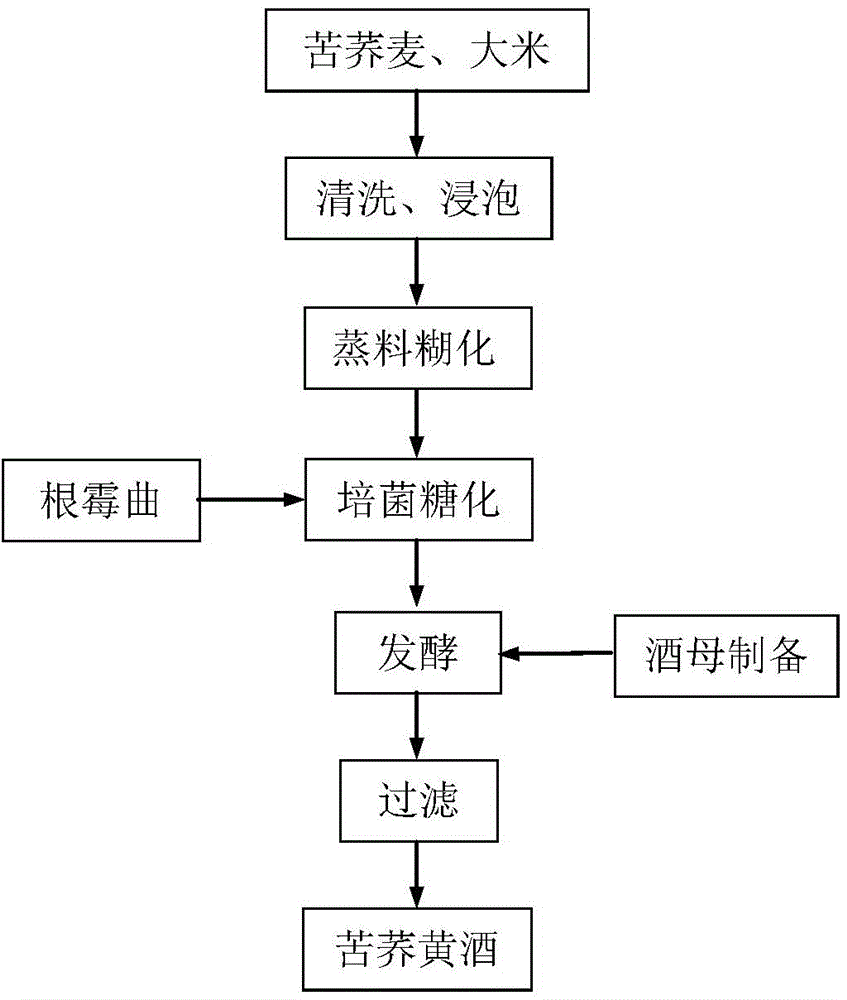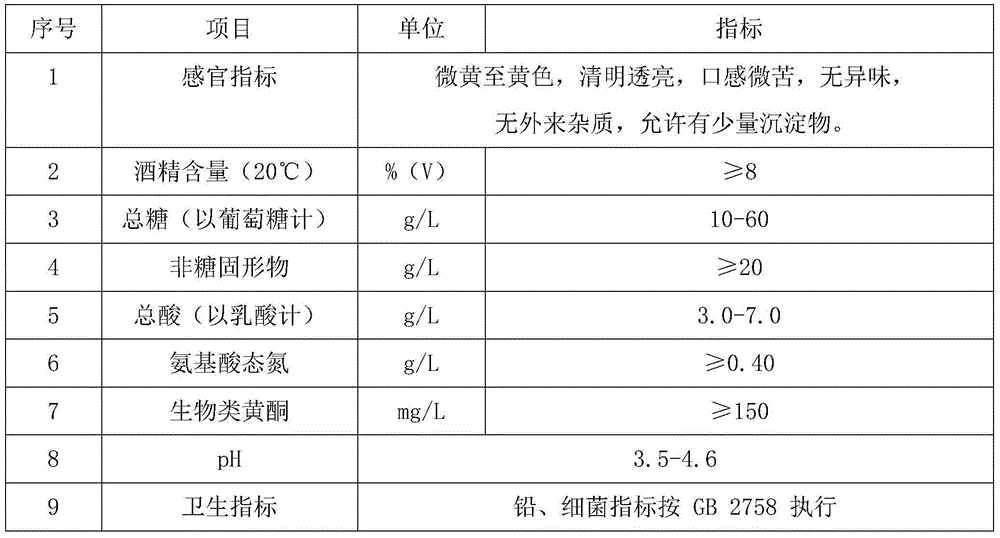Preparation method for yellow bitter buckwheat wine
A technology of rice wine and tartary buckwheat, which is applied in the field of wine making, can solve the problems of not being simple and energy-saving in the preparation process of tartary buckwheat rice wine, and achieve the effects of enriching varieties, rich nutrition, and preventing and mitigating sub-health states
- Summary
- Abstract
- Description
- Claims
- Application Information
AI Technical Summary
Problems solved by technology
Method used
Image
Examples
Embodiment 1
[0033] Embodiment 1: the preparation method of tartary buckwheat rice wine
[0034] 1. Raw material
[0035] 20% tartary buckwheat, requiring full grains, no mildew, no moths;
[0036] 80% rice, requiring smooth color, no impurities, no disease spots.
[0037] 2. Cleaning and soaking
[0038] Rinse tartary buckwheat and rice with water until the drenched water is free of turbidity, add 1.5 times the weight of water and soak for 6 hours.
[0039] 3. Gelatinization of steamed material
[0040] Mix well-absorbed tartary buckwheat and rice evenly, steam and gelatinize the material under normal pressure for 30 minutes, and let it cool for later use.
[0041] 4. Bacteria saccharification
[0042] Put the steamed material that has been cooled to room temperature in a pre-cleaned and sterilized container, mix it with Rhizopus koji at 0.5% of the weight of the raw material, seal it with gauze, and cultivate and saccharify at 25°C for 24 hours.
[0043] 5. Activation of Active Dry...
Embodiment 2
[0051] Embodiment 2: different yeast fermentation process test
[0052] The wine mother cultured by pure Saccharomyces cerevisiae (CGMCC 2.1364) and active dry yeast activation solution were respectively selected for the fermentation test of tartary buckwheat rice wine. The fermentation results are shown in Table 2. From the results, the quality and flavor of tartary buckwheat rice wine brewed with different yeasts are not much different. In contrast, the activation treatment and fermentation operation of fermentation with active dry yeast are easier.
[0053] Table 2 Fermentation results of different yeasts
[0054] yeast species
Embodiment 3
[0055] Embodiment 3: Fermentation process test with different material-to-water ratios
[0056] From Table 2, it can be seen that the alcohol content of tartary buckwheat rice wine is not high, which will have a certain impact on the flavor and preservation of the wine. Therefore, fermentation experiments under different ratios of feed to water were carried out to study whether the wine obtained from fermentation can be improved by controlling the ratio of feed to water. The degree of alcohol and other indicators of alcohol have been improved to a certain extent. Table 3 shows the results of fermentation experiments with different material-to-water ratios. According to the experimental results, alcohol content and amino acid nitrogen can be increased by reducing the ratio of material to water, and the content of bioflavonoids is also increased.
[0057] Table 3 Fermentation results with different material-to-water ratios
[0058] Ratio of material to water
PUM
 Login to View More
Login to View More Abstract
Description
Claims
Application Information
 Login to View More
Login to View More - R&D
- Intellectual Property
- Life Sciences
- Materials
- Tech Scout
- Unparalleled Data Quality
- Higher Quality Content
- 60% Fewer Hallucinations
Browse by: Latest US Patents, China's latest patents, Technical Efficacy Thesaurus, Application Domain, Technology Topic, Popular Technical Reports.
© 2025 PatSnap. All rights reserved.Legal|Privacy policy|Modern Slavery Act Transparency Statement|Sitemap|About US| Contact US: help@patsnap.com



